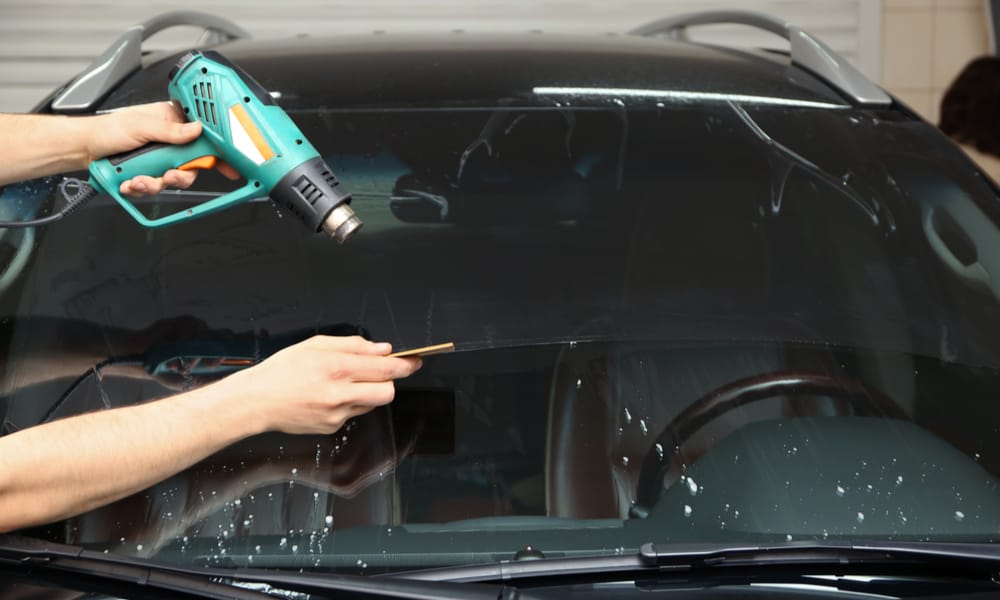What type of ceramic and window tinting are best for us?
The type of ceramic and window tinting that is best for you depends on several factors, including your location, personal preferences, and specific needs.
Ceramic window tinting is a type of window film that is made with ceramic particles. It is known for its high heat rejection properties and its ability to block UV radiation. Ceramic window tinting is also non-metallic, which means it will not interfere with electronic signals.
When it comes to choosing the best ceramic window tinting for you, you should consider the following factors:
Visible Light Transmission (VLT):
This is the amount of visible light that is allowed to pass through the window. Different states have different laws regarding VLT levels, so you should check your state's regulations before choosing a tint.
Heat Rejection:
The higher the heat rejection percentage, the more effective the window tinting will be at reducing the amount of heat that enters your car or home.
UV Protection:
Look for window tinting that blocks both UVA and UVB rays to protect your skin and the interior of your car or home from fading.
Warranty:
Make sure the ceramic window tinting you choose comes with a warranty to ensure that you are protected in case of any defects or problems.
As for ceramic materials, there are many types of ceramics that are used for various applications. Some of the most common types of ceramics include:
Porcelain:
This is a type of ceramic that is made by firing a mixture of clay and other materials at high temperatures. Porcelain is known for its strength, durability, and resistance to heat and chemicals.
Stoneware:
This is a type of ceramic that is fired at a high temperature and is known for its strength and durability. It is often used for kitchenware and decorative pieces.
Earthenware:
This is a type of ceramic that is made from clay that is fired at a lower temperature than stoneware and porcelain. It is often used for decorative pieces and tableware.
Ultimately, the type of ceramic and window tinting that is best for you will depend on your individual needs and preferences. It may be helpful to consult with a professional window tinting installer or ceramic specialist to determine the best options for your specific situation.
Darkness:
The darkness of the tint can affect visibility and may be regulated by local laws. Consider your driving needs and the amount of sunlight you want to let in when choosing the darkness of the tint.
Brand and quality Not all ceramic window tinting films are created equal. Look for reputable brands with high-quality products that have been tested for performance and durability.
Energy savings:
Ceramic window tinting can help reduce energy consumption by reducing the amount of heat that enters your car or home. Look for products with high Solar Heat Gain Coefficients (SHGC) and U-Values to maximize energy savings.
Installation:
Proper installation is critical for the effectiveness and longevity of your window tinting. Make sure to choose an experienced and reliable installer who uses high-quality materials and provides a warranty.
When it comes to choosing the best ceramic materials, some other factors to consider include:
Application:
Consider the specific application you need the ceramic for, whether it's for kitchenware, electronics, or industrial use. Certain ceramics may be better suited for certain applications than others.
Strength and durability:
Depending on the application, you may need a ceramic that is resistant to wear, impact, or chemicals. Consider the environment and conditions the ceramic will be exposed to when selecting the best material.
Aesthetics:
Ceramics can come in a wide range of colors and finishes, so consider the aesthetic qualities you want for your specific application.
Overall, it's important to carefully consider your needs and preferences when selecting the best ceramic and window tinting for your situation. Consulting with professionals and doing thorough research can help ensure that you choose the right products for your needs.

Comments
Post a Comment